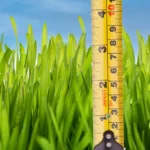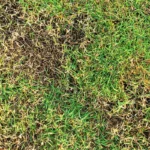Helpful Tips
Common Lawn Issues - Part 1
Pest control and fertilization treatments only work when turf is properly and adequately watered. Here are some signs that may indicate your lawn watering schedule needs adjustment to help ensure a greener, healthier lawn. Keep in mind, proper watering alone is not enough. Despite regular treatment and your best efforts, pests and disease are another reason a lawn can suffer. Part two of our Common Lawn Issues we review some of the most common pests in our area, what to look for and how your regular maintenance can be a contributing factor to the spread of these issues.

DROUGHT STRESS
Pests and disease are not the only things that can impact your lawn. Un-seasonally hot and dry weather conditions and underwatering also play a role in your lawn’s health. For example, St. Augustine grass exhibits drought stress signs which can alert you that your turf is too dry before they become major issues leading to decline. Whenever possible, try to check your lawn in the heat of the day or the early afternoon, as the morning dew may present false negatives to these issues.
Blade Folding
Healthy, well-watered grass will appear almost completely flat and totally open. When grass begins to dry out, the blade will fold in half upon itself, to reduce surface exposure to the sun and conserve water.
Slow “Spring Back”
While St. Augustine does not fare well in heavy traffic areas, healthy turf should spring back to an upright position within 5 seconds of being walked upon. If your footprints last more than 10 -15 seconds in the turf, this is a sign of drought stress.
Mower Tracks
When a St. Augustine is not properly watered, brown streaks may appear 3 to 5 days after mowing mirroring the cutting path. This indicates the drought-stressed grass is less resilient, and the weight of the mower tires has broken the blades at their stolon, causing them to slowly die.
Crunchy Grass
One of the most concerning signs of drought stress is one you can hear, but not see. This is because it happens even while the grass is still green. Crunchy dry grass crunches and crackles when walked on, but the stress is not visible just by looking at it. A hydrated lawn is softer and cushions better underfoot.
Remember, well-watered turf produces deeper roots, which are better protected. Drought-stressed turf produces shallow roots which are too close to the surface to survive North Florida’s summer heat temperatures. Left neglected and thirsty, your lawn could begin to brown-out, thin, and die. While it is important to adhere to watering regulations you should schedule ample watering, even in cooler months, to maintain a healthy appearance and reduce the likelihood of insect and weed infestations between treatments.




